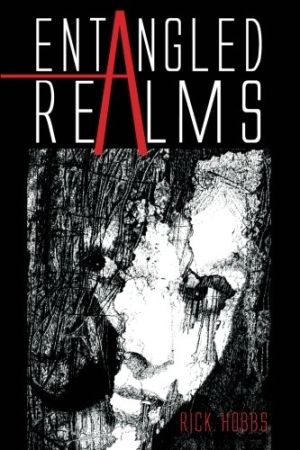It looks like you've stumbled upon a page meant to be read by our code instead of viewed directly. You're probably looking for this page.
Entangled Realms
What if science and soul were not incompatible? A former physicist asks the fascinating question.
Mathematician Rachel LaJoie and her longtime boyfriend, physicist Terry McGuire, are firm believers in the Western scientific method at the start of Rick Hobbs’ fascinating debut novel, Entangled Realms. With their work grounded in physical evidence, Rachel and Terry have little use for the healing properties of Buddhist practice. However, when Buddhist meditation and acupuncture help Rachel recover from a brain bleed, she discovers a peaceful place when she meditates. It is a state of mind known as the Formless Realm, where Rachel and Terry discover a connection with physics that could change science forever.
As a doctor and former physicist who studies Eastern philosophy, Hobbs grounds his book securely in both arenas. While the author’s explanations of superstring theory and Calabi-Yau spaces might be difficult for those unfamiliar with the concepts to understand, the novel offers much for lay readers to enjoy. Hobbs is much better at explaining the basics of Buddhism and incorporating those elements into the story. Even the Dalai Lama is a fully realized character. But ultimately Rachel, Terry, and their love take center stage.
Rachel is readily open to Eastern medicine and Terry is more skeptical, but they discuss their viewpoints civilly, maintaining affection for each other. Only Terry’s workaholic tendencies, not their differing philosophies, threaten to drive them apart. Eventually, villains with unclear identities emerge; it is ambiguous if they are government operatives, scientists, or both. Regardless, the evildoers seem superfluous compared to the crises that Terry and Rachel weather individually and as a couple. Along the way, Buddhist figures, including the Dalai Lama, help the couple see the connection between science and faith.
The novel opens and closes with physical calamity, and the characters use their love “as a force” to help each other survive. Hobbs superbly blends science with religion to illustrate a monk’s point that “parts are in whole; whole in parts.” In other words, everyone is interconnected. No matter how the audience feels about Buddhism or physics, the universal themes of the power of love and interconnectedness are sure to resonate with many readers. Hobbs takes care to develop the monk, Tashi, and the couple’s other monastic allies beyond one-dimensional figures. Secondary characters possess complex senses of humor and wisdom that cannot be captured in stereotypical language; they live full lives outside the monastery, studying and teaching.
Anyone who thinks science and religion are cousins, and who celebrates triumph over adversity wrapped in mysticism, should become entangled in the realms of this heady novel.
Reviewed by
Jill Allen
Disclosure: This article is not an endorsement, but a review. The publisher of this book provided free copies of the book and paid a small fee to have their book reviewed by a professional reviewer. Foreword Reviews and Clarion Reviews make no guarantee that the publisher will receive a positive review. Foreword Magazine, Inc. is disclosing this in accordance with the Federal Trade Commission’s 16 CFR, Part 255.
